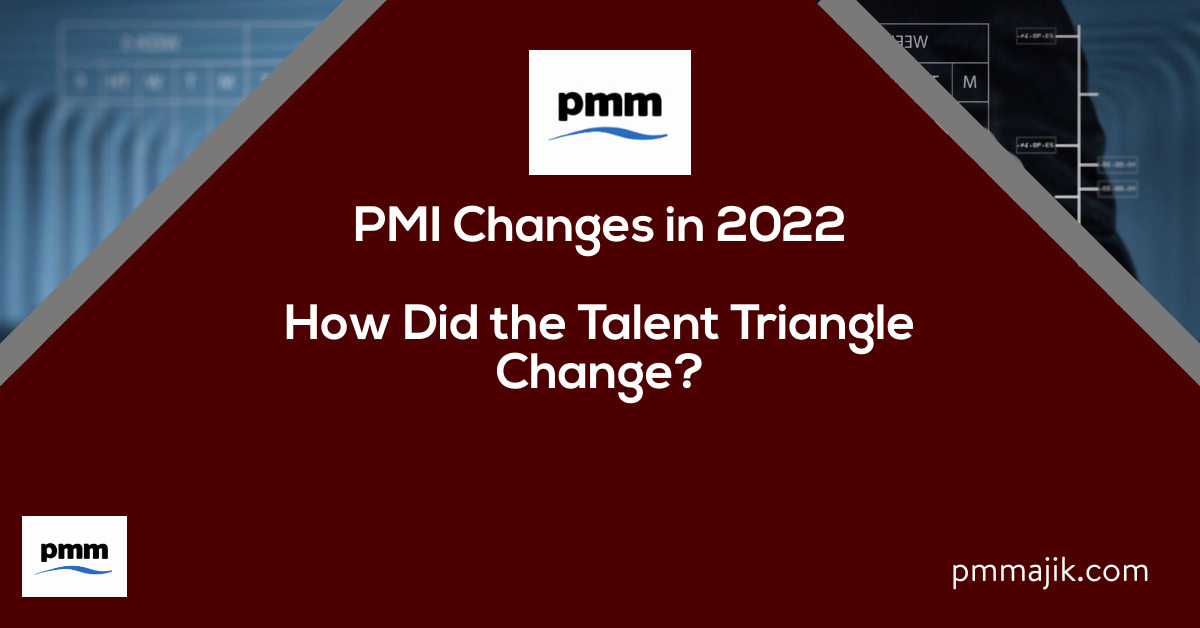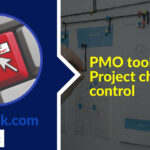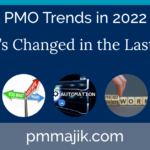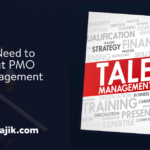With over three-quarters of a million active certification holders, the PMI’s Project Manager Professional (PMP) can be a worthwhile investment. It takes time and money to get PMP-certified, but as a project management office (PMO) operative, it should add value to your CV.
Originally launched in 1984, the certification is well-established. As project management has developed, so has the framework and the focus of the PMI and the qualifications it offers.
Whether you’re freshly qualified as a PMP, or you’re coming up for recertification and want to understand how PMP Talent Triangle has changed, we’re going to look at:
- What the PMP Talent Triangle is
- What has changed about the PMP Talent Triangle
- How the recent PMP changes may affect you
What is the PMP Talent Triangle?
The Talent Triangle for the PMP certification is there to help project workers and managers develop and progress their careers in a well-rounded way. As you’d expect, there are three sides to the talent triangle.
If you got your PMO certification before mid-2022, you would know the Talent Triangle to be:
- Technical project management
- Leadership
- Strategic and business management
We’ll look at the new names for these in a moment. However, what’s important about these is that they inform the Professional Development Units (PDUs) you need to cover.
What are PDUs?
Professional Development Units are a way for PMI to encourage you to continually commit to your project management career. Your PMP needs to be recertified every three years, and within that time, you need to earn 60 PDUs.
Along with the update to the Talent Triangle, the mix of PDUs has also changed. We’ll cover the update to PDUs in 2022 in a separate blog.
How has the PMP Talent Triangle changed?
The rebranding of the three prongs of the Talent Triangle has been done to keep the certification relevant and adapt it to the changing world of project management.
In the same order as above, the new three sides of the Talent Triangle now are:
- Ways of working – as a project professional, you should be learning about different ways of working, such as agile, disruption, or digital transformation.
- Power skills – leadership is just one soft skill a PMP needs, others might include collaborative working or adaptable communications, for example.
- Business acumen – a project professional needs to make good decisions based on business needs, with an eye on the overall strategy.
While the original sides of the triangle are maintained, they have been expanded upon to recognise the changing ways that projects, project managers, and the PMO team are working.
How does the new Talent Triangle affect my PMP certification?
On a practical level, very little will change – except the graphics you see and the titles on a page. Hopefully, you’ve logged into your Continuing Certification Requirements System (CCRS) since 2022, where you will have seen the updated language.
The actions you need to complete for the Education PDUs won’t change, but they will fall under these new categories. You won’t see anything different in the Giving Back section in terms of language.
None of your current PDUs under the old names will be lost. You’ll still be able to complete your recertification as normal – there’s nothing you need to worry about when updating your PMP in the future.
Changes to the PMO Talent Triangle
The changes to the PMO Talent Triangle reflect the new ways PMOs and projects are working in the modern working world. Launched in 2022, the new way of talking about your methodologies, skills, and decisions should broaden what you can learn in the long-run, but for now, there has been no practical changes to your education PDUs.






